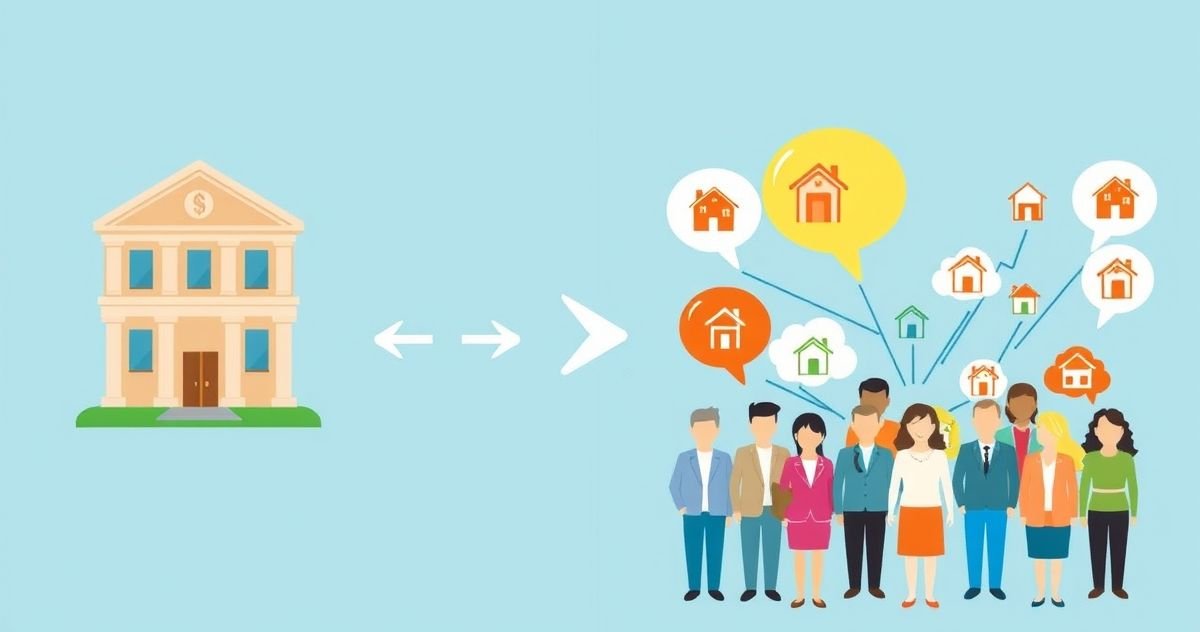When seeking a loan—whether for a mortgage, auto purchase, or business financing—you generally have two primary avenues: working with a direct lender or engaging a broker. Each has distinct roles and advantages that can affect your loan’s terms and application process.
Direct Lenders: Your Loan Source
Direct lenders are financial institutions that underwrite, approve, and fund loans using their own capital. Examples include major banks like Chase or Bank of America, credit unions, and online lenders such as Rocket Mortgage or SoFi. When applying with them, you deal directly with the entity providing your loan.
Pros of Using a Direct Lender:
- Streamlined Communication: You interact with one institution from application through funding, simplifying the process.
- Potential for Faster Approval: Without intermediaries, decisions can be quicker for straightforward cases.
- Relationship Benefits: Existing customers might receive preferential rates or smoother processing.
- Transparency: Dealing with the source of funds usually means clearer fee structures.
Cons of Using a Direct Lender:
- Limited Loan Options: Direct lenders offer only their own products, potentially restricting your choices.
- No Rate Comparison: You’re responsible for shopping around to ensure competitive rates.
Brokers: Your Loan Matchmakers
Brokers do not lend money themselves. Instead, they connect you to multiple direct lenders, helping you compare loan products and rates across a broader market. This is particularly common in mortgages but applies to other loan types as well.
Pros of Using a Broker:
- Access to a Variety of Lenders: Brokers leverage networks that include large banks and niche lenders to find tailored loan options.
- Convenience: They research and compare loans on your behalf, saving you time.
- Expert Guidance: Brokers can navigate complex lending criteria and suggest ways to improve your application.
- Solutions for Complex Situations: For borrowers with unique financial profiles, brokers often know lenders willing to accommodate them.
Cons of Using a Broker:
- Potential Fees: Some brokers charge fees directly, while others receive commissions from lenders. Transparency is essential.
- Additional Communication Layer: You primarily deal with the broker, which can sometimes slow the process or cause misunderstandings.
- Possible Bias: Brokers may favor lenders who pay higher commissions, making it important to verify offers independently.
How the Processes Work
- Direct Lender: You apply directly, the lender evaluates you, offers approval, and funds your loan.
- Broker: You provide your information to the broker, who shops your application to several lenders, presents offers, and facilitates your choice. The selected lender then funds the loan.
Choosing Between a Direct Lender and a Broker
- Opt for a direct lender if you have a straightforward financial profile, prefer direct contact, or already have a banking relationship.
- Choose a broker if you want convenience, need access to multiple loan products, have a complex financial situation, or seek expert advice.
Tips for Borrowers
- Research and compare offers from multiple lenders or request comprehensive options from your broker.
- Ask clearly about all fees involved.
- Ensure you fully understand the loan process and get written confirmation of offers.
Understanding the distinct roles of lenders and brokers empowers you to select the best path for your borrowing needs, helping you secure favorable terms and a smoother application experience.
Sources:
- Consumer Financial Protection Bureau. “What is a mortgage broker?” https://www.consumerfinance.gov/ask-cfpb/what-is-a-mortgage-broker-en-1490/
- Investopedia. “Direct Lender.” https://www.investopedia.com/terms/d/direct-lender.asp
- NerdWallet. “Mortgage Lender vs. Broker: Which Should You Choose?” https://www.nerdwallet.com/article/mortgages/mortgage-lender-vs-broker
- Forbes Advisor. “What Is A Mortgage Broker?” https://www.forbes.com/advisor/mortgages/what-is-a-mortgage-broker/
For additional guidance on loan types and credit options, explore FinHelp’s Mortgage Loans and Personal Loans articles.



